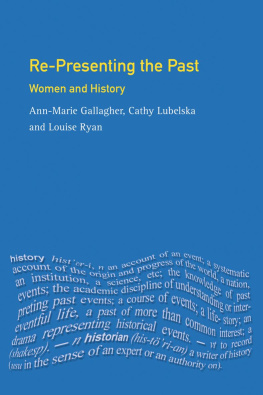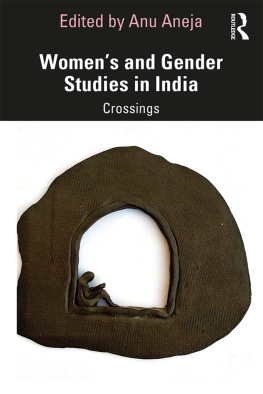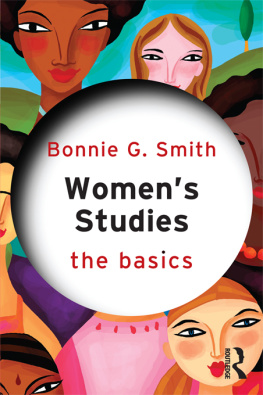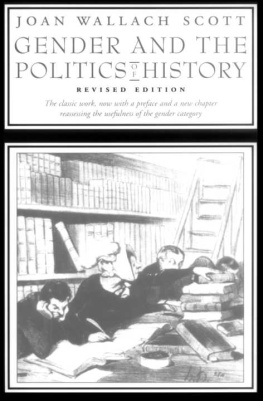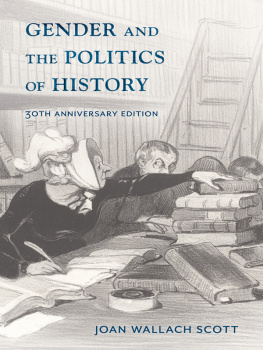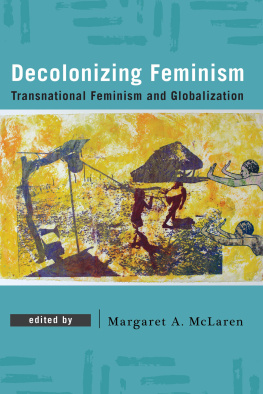THROUGH FEMINIST EYES
ESSAYS ON CANADIAN WOMENS HISTORY
Joan Sangster
THROUGH
FEMINIST
EYES

2011 JOAN SANGSTER
Published by AU Press, Athabasca University
1200, 10011 109 Street
Edmonton, AB T5J 3S8
ISBN 978-1-926836-18-8 (print)
ISBN 978-1-926836-19-5 ( PDF )
ISBN 978-1-926836-40-9 (epub)
Cover and book design by Natalie Olsen, Kisscut Design.
Cover image by Fototeca Storica Nazionale / Photodisc / Getty Images, Feminist Reunion of the Socialist League.
Author photo by Lesli Onusko.
Printed and bound in Canada by Marquis Book Printing.
We acknowledge the financial support of the Government of Canada through the Canada Book Fund ( CBF ) for our publishing activities.

Library and Archives Canada Cataloguing in Publication
Sangster, Joan, 1952
Through feminist eyes: essays on Canadian womens history / Joan Sangster.
Issued also in electronic format.
ISBN 978-1-926836-18-8
1. WomenCanadaHistory.
I. Title.
HQ 1453. S 26 2011 305.40971 C 2011-900870- X
Please contact AU Press, Athabasca University at aupress@athabascau.ca for permissions and copyright information.
ACKNOWLEDGEMENTS
This book would not have been possible without the support I received from everyone at Athabasca University Press. Alvin Finkel especially has been an exemplary editor; his smart and perceptive comments flew back almost immediately when I sent him emails, and he was always on the mark with his suggestions. Betsy Jameson also offered important encouragement and feedback, and all the staff at AU Press, including the director, Walter Hildebrandt, have been wonderful. I also want to thank the anonymous reviewers of the manuscript for their comments and input. At Trent, Meghan Buckham and Kirk Niergarth provided me with much-needed technical aid, organizing the manuscript and magically turning old articles on paper into modern computer files. As always, Bryan Palmer provided unconditional love and support; indeed, when I was reluctant to proceed with a retrospective collection of my own work, he encouraged me to do so.
My thinking about womens history has been shaped by many factors over the past thirty years: Ive been inspired by the writing of scholars whom I have never met and by friends and colleagues with whom Ive shared new ideas over glasses of wine. Ive also benefited tremendously from my interactions with undergraduate and graduate students, whose engagement with historical writing can be energizing, enlightening, and inspiring. Because of them, my job is far more than work; it is also a pleasure and a joy. This book is dedicated to them.
All royalties from this book will be donated to the Barbara Roberts Memorial Fund, which provides support for projects relating to workplace issues, unions, and radical social movements, to the pursuit of peace, social justice, and human rights, and to womens studies education, all examined from a feminist perspective.
INTRODUCTION: REFLECTIONS ON THIRY YEARS OF WOMENS HISTORY
I did not grow up wanting to be a historian. As a well-socialized child of the 1950s, my early fantasies centred more on the frilliest wedding dress possible. Luckily for me, I abandoned the say yes to the dress dream for a life in history. After an undergraduate career in which I managed to avoid Canadian history almost completely and focused instead on African subjects, I worked, travelled to Africa, and came back thinking about the radical possibilities of history on the home front. From the time I returned to school, first part-time at Glendon College, then to do graduate work at McMaster University, I had a dual devotion to labour and womens history, though there were inevitably tensions and challenges in that pairing. Yet as I was a relatively new feminist at that time, womens history often felt like home, and I have never lost the sense of discovery, excitement, involvement, and pleasure that reading womens history entails. Trying to pass a fraction of that excitement along to students has taken up almost thirty years of my life, and I have thoroughly enjoyed the wow factor in students responses to previously unimagined views of the past, whether it was Sylvia Van Kirks wonderful reinterpretation of women in the fur trade, Constance Backhouses disturbing account of the Ku Klux Klan and intermarriage, or Rusty Bittermans tale of Isabella MacDonald, a stick-wielding rural woman defending her family and property against Prince Edward Island landlords.
This collection grew out of a desire to reflect critically on the evolution of womens history over the past thirty-some years. My original intent was to pen a historiographic text, but other research passions always intervened. Another feminist historian suggested using my own writing as a basis around which to discuss womens history in Canada, and Athabasca University Press responded to her suggestion with enthusiasm. This is not, however, an autobiographical text detailing my personal experiences as a historian. Nor do I claim that the essays gathered here are a perfect reflection of the evolution of Canadian womens history, since the interpretive paths of gender historians have sometimes approximated each other but have at other times diverged. I chose a number of pieces that explore some of the changing concerns and debates in womens history, though ultimately they illustrate how I wrestled with concepts, theories, and the peculiarities of Canadian gender history. One advantage of taking a retrospective view of writing about womens history is that it helps to contextualize our own writing, reminding us how significantly womens and gender histories were shaped by the social milieu, political background, and theoretical debates of the time. I do not pretend to hide my own research interests (how could I?), which have centred on themes such as class, work, legal regulation, and colonialism, or my theoretical predilections for a feminist historical materialism, if influenced also by some of the post writing. While my ideas have shifted over time, productively challenged especially by critical race theory and anticolonial writing, I also believe that not everything new is automatically better. Some old ideas and positions may be, and should be, defended.
It is not my aim to offer a detailed from then to now description of the writing of womens history in this introduction, though a few very general observations do come to mind. First, Canadian womens history has always existed at the crossroads of, and in dialogue with, international writing, particularly that emanating from the United States, Britain, and France (the last more so in Quebec). As colonialism has taken on greater significance in womens history, scholarship on empire, and comparative research on British white settler societies have also become more important. Second, writing on women and gender has been intimately connected to, and stimulated by, movements for social change, most notably, (but not only) the womens movement. Whether it was challenges to the gendered division of labour, patriarchal legal structures, or the regulation of womens bodies, feminist critiques of existing power structures have had an inestimable impact on womens history. In turn, feminist efforts to construct our own herstory offered insights into, and also lent weight to, specific political struggles. As racism increasingly became a political issue for the womens movement, for instance, new questions about race and whiteness emerged in womens history, though political concerns always take some time to register in published scholarship.
Next page

